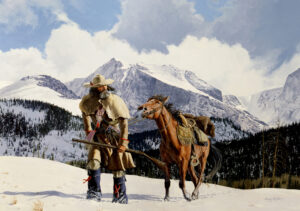The Civil War and American Art
Eleanor Jones Harvey, Yale University Press
The cultural aspects of the Civil War often get over-shadowed by the conflict’s military, political and social histories, but a new exhibition, “The Civil War and American Art,” has fortunately brought the topic to the forefront. After an extended run at the Library of Congress, the exhibit [reviewed in the Civil War Times April issue] moves in May to New York’s Metropolitan Museum of Art, where it will be displayed until September. For those unable to see the show in person, there is a rewarding alternative: a handsome companion catalog written by Eleanor Jones Harvey, senior curator at the Smithsonian American Art Museum.
In chapters on landscapes, genre painting and photography, Harvey ably demonstrates how the war transformed the vision of American artists. In a country at war, landscape painters such as Frederic Edwin Church, Sanford Robinson Gifford and John Frederick Kensett could no longer offer radiant views of an untrammeled American nature. Instead, a sense of foreboding seeped into their work. Even paintings that did not seem focused on the war, such as Church’s Cotapaxi (1862), were read in terms of combat, a “great battlefield of nature’s forces,” as one reviewer put it. Gifford’s A Coming Storm (1863) evoked sadness and grief. The paintings, Harvey argues, became meditations on “loss and recovery.”
Photographers could depict the terrible realities of war in ways painters could not. Mathew Brady, Alexander Gardner, George Barnard, Andrew Russell and Timothy O’Sullivan, among others, captured images that drew upon landscape conventions and transformed photography into an art form. These photographs, Harvey shows, had an effect on painters, whose work became increasingly empathetic to the soldier’s war. A chapter titled “The Human Face of War” is noteworthy for the attention it gives to Confederate artist and soldier Conrad Wise Chapman, whose landscapes offer a view of war that seems neither idealized nor dramatized. Rather, he portrays fortifications and the men who inhabit them. Winslow Homer also receives extended attention, and viewers may be surprised by some of his lesser-known works, such as Skirmish in the Wilderness (1864), a landscape that turns nature dim and deadly.
At war’s end, Homer offered striking paintings of African Americans, whether The Bright Side (1865) or Near Andersonville (1865-66). Harvey devotes a final chapter to abolition and emancipation and shows how the issue of freedom led some genre painters, such as Eastman Johnson, to direct their attention to the enslaved.
The Civil War and American Art probes the influence of the war on the artistic world, and it does so masterfully. But the way in which the era’s changing visual culture shaped the war that was being waged deserves additional consideration in the future.
Exhibit at New York’s Metropolitan Museum of Art from May 27- September 2. To learn more, visit metmuseum.org/exhibitions/ listings/2013/civil-war.
Originally published in the June 2013 issue of Civil War Times. To subscribe, click here.




